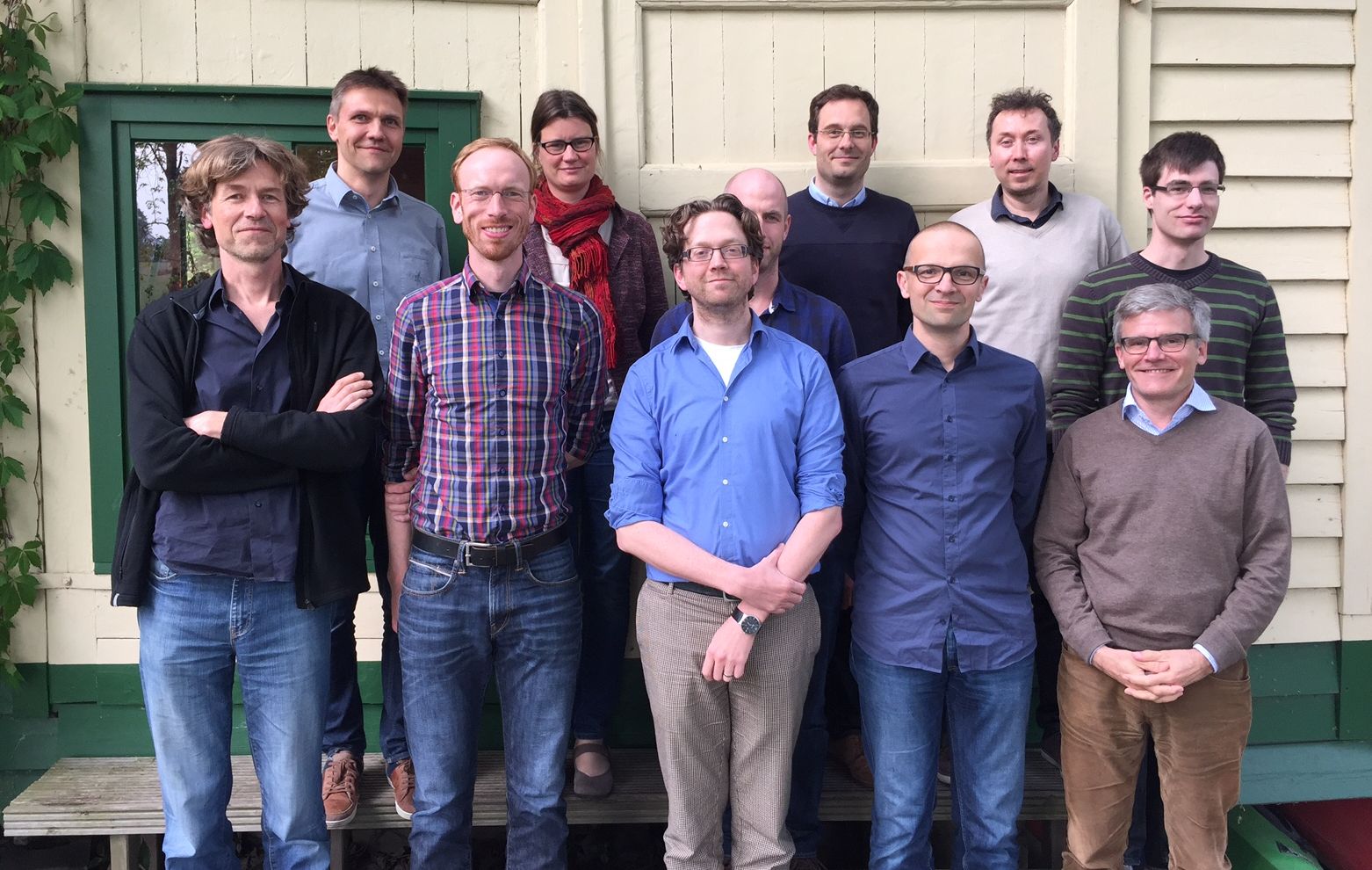Feedback on and Focus for the o2r Vision
07 Jun 2016 | By Daniel NüstA couple of weeks ago the o2r team met with a group of experts to discuss the project’s outline and scope. Being a few months into the project, the team members were eager to get feedback on their plans, which they created based on the original project proposal, the first practical evaluations, and extensive reviews of research literature. To give this feedback, we invited a group of external partners to a full day meeting at the Wersehaus, a small boathouse in the countryside next to the Werse river.

Image is licensed under a CC BY-NC-ND 4.0 International license.
This workshop was already planned in the project proposal and proved to be worth the preparation and, first and foremost, the efforts of our guests to travel to Münster. The external participants were Xenia van Edig from Copernicus’s business development team, Hylke Koers, Head of Content Innovation at Elsevier, Simon Scheider from the Department of Humany Geography and Spatial Planning at Utrecht University, Tomi Kauppinen from the Department of Computer Science at Aalto University, and Werner Kuhn from the Center for Spatial Studies at University of California, Santa Barbara. The photo above also shows the o2r team members participating: Edzer Pebesma, Daniel Nüst, Markus Konkol, Chris Kray (all ifgi), Holger Przibytzin, and Marc Schutzeichel (both ULB).
We started the day with talks by the external partners and project grantees. With such a select group, we were not surprised to get an excellent discussion rolling from the first talk on! You can download the talks’ slides below if available, just click on the person’s name.
- Edzer set the context of the project and took a look back at the motivation for the project (among which is personal annoyance!)
- Werner discussed the products of research (hypotheses, software, data, narratives) and provided some claims on these that fueled a lively discussion.
- Tomi approached reproducibility from the question “How science works?” and connected it to his work on Linked Open Science (see also the original Prezi).
- Holger introduced the interests and role of the university library in the project.
- Xenia presented different levels of open access publication workflows and shared experiences from the publication domain and enforcement of openness.
- Hylke talked about content innovation’s relation to reproducibility and showed a variety of work around interactivity in the article of the future.
- Chris related reproducible research to ifgi’s vision of an open geoinformatics platform, and critically discussed benefits and challenges.
We continued the day with intensive discussions on the project’s schedule for the first year, stretching across all aspects such as preservation metadata, usability and user interaction, and compendium specification. After lunch these areas were explored more deeply in an Open Space setting prepared by the projects full-time employees Marc, Markus, and Daniel. Afterwards we drilled deeper to identify potentials risks and their mitigations, as well as answering the crucial question: Where can the project have the largest impact?
We found that a narrow focus is crucial for the project to succeed. Since we’re not going to change the publishing landscape in one step and we want to make an impact in the community we know best, geoinformatics, we see these high priority goals for the foreseeable project’s future:
- New means of interaction with and exploration of scientific spatio-temporal data, analyses, and visualisations based on linked research compendia contents.
- Automatic (bordering on magical) creation of executable research compendia based on typical science workspaces for R-based geosciences.
- Specification of an executable research compendium rooted firmly in users’ requirements, preservation requirements, the currently dominating procedures in scientific publications, and reality of highly diverse scientific workflows.
- New ways for searching scientific work based on the integrated and linked parts of a research compendium (text, code, data, user interface bindings).
So what will we understand in two years time that we do not know now?
- We have a good understanding of how far the process of creating research compendia can be automated, and what efforts remain for authors or preservationists that must be counterbalanced with incentives.
- We know the potential of user interface bindings as the connecting entity of research compendia.
- We show the improvements in discovery and understanding of research when all aspects of research are explicitly linked in a meaningful way.
- We get to know the common language as well as points of contact for the involved parties as we create a closer connection between research, preservation, and publication communities.
What do you think? Ambitious goals, or nothing new? Give the new discussion feature below this post a try!
We thank again our guests for their valuable inputs. Having their backgrounds in research as well as scientific publishing, their critical evaluation helps us to shape a clear direction for our work. To keep in touch, follow us on Twitter or GitHub.

